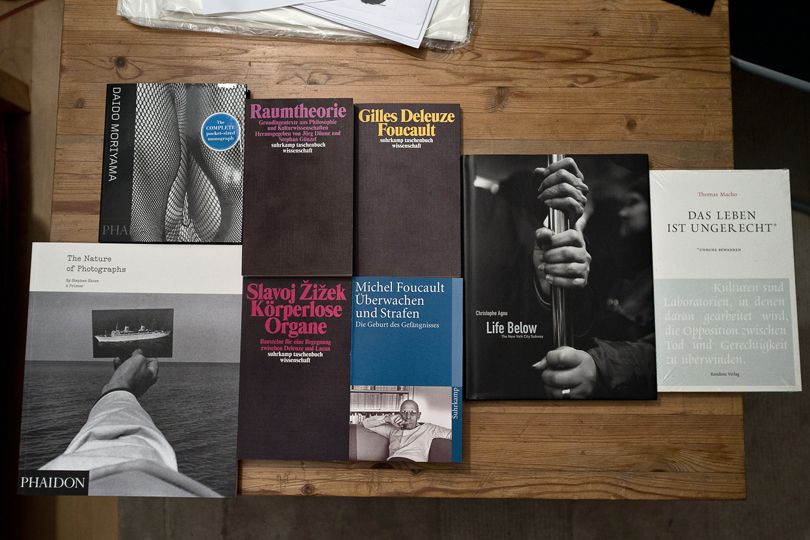Vivian Maier Out of the Shadows by Richard Cahan and Michael Williams. CityFiles Press, Chicago, Illinois. ISBN 978-0-9785450-9-3. This book arrived a few days ago and when I looked at it the first time I wasn't too taken with it. I didn't like the presentation of many of the photographs, they bleed off the page with no border and alternate with a white bordered page - the book is square in shape, appropriately enough. There are a few pages with small pictures taken in France (probably with 620 film) and one or two pages with 12 small prints of a complete roll from her Rolleiflex. There seemed to be a lot of writing.
Each evening last week I looked at sections of the book and came to terms with it more and more. I was drawn in by the writing as the authors speak to her personal life through various stages and she is less of an enigma after some of it. Also the pictures in this book surely reflect her life more than the pictures in the first book as there are many pictures of children and family life. Presumably the title Out of the Shadows is an allusion to the biographical and personal content. There is also comment on her talent by people like Joel Meyerowitz and discussions of her empathy with those who suffer from inequality. She took up photography at an early age and appears to have been obsessed with taking pictures. She was a voracious shooter her whole life except for the beginning and end. She used a huge amount of film and sometimes would process in two different labs at once. She sometimes had difficulty paying for developing and printing and the authors think that all the undeveloped rolls are a casualty of her inability to pay for processing later in her life.
The pictures are similar to those in the first book except that there are many more of them. Like the first book many are very good, but if a comparison is to be made between the two books this is more personal, the first one was edited more for image content and composition. There is some social commentary especially during the year of 1968; the deaths of Martin Luther King and Bobby Kennedy, also the race riots and violent Democratic Convention in Chicago that year. There are many portraits of children and older people that are powerful and humane. She was clearly able to relate to her subjects in the way Willy Ronis did and HCB didn't, yet she was a very private person and apparently socially awkward. The book has given me the context of her persona to set beside the pictures she took and there's a remarkable contrast there. Now I'm glad I have it. I still don't like the page bleeds though.


